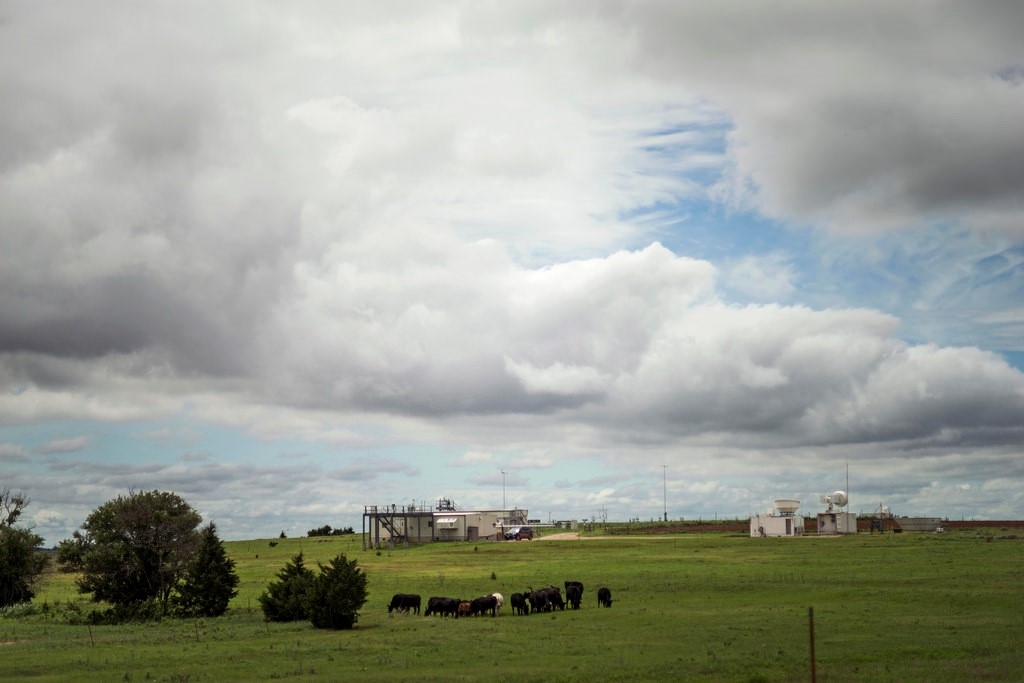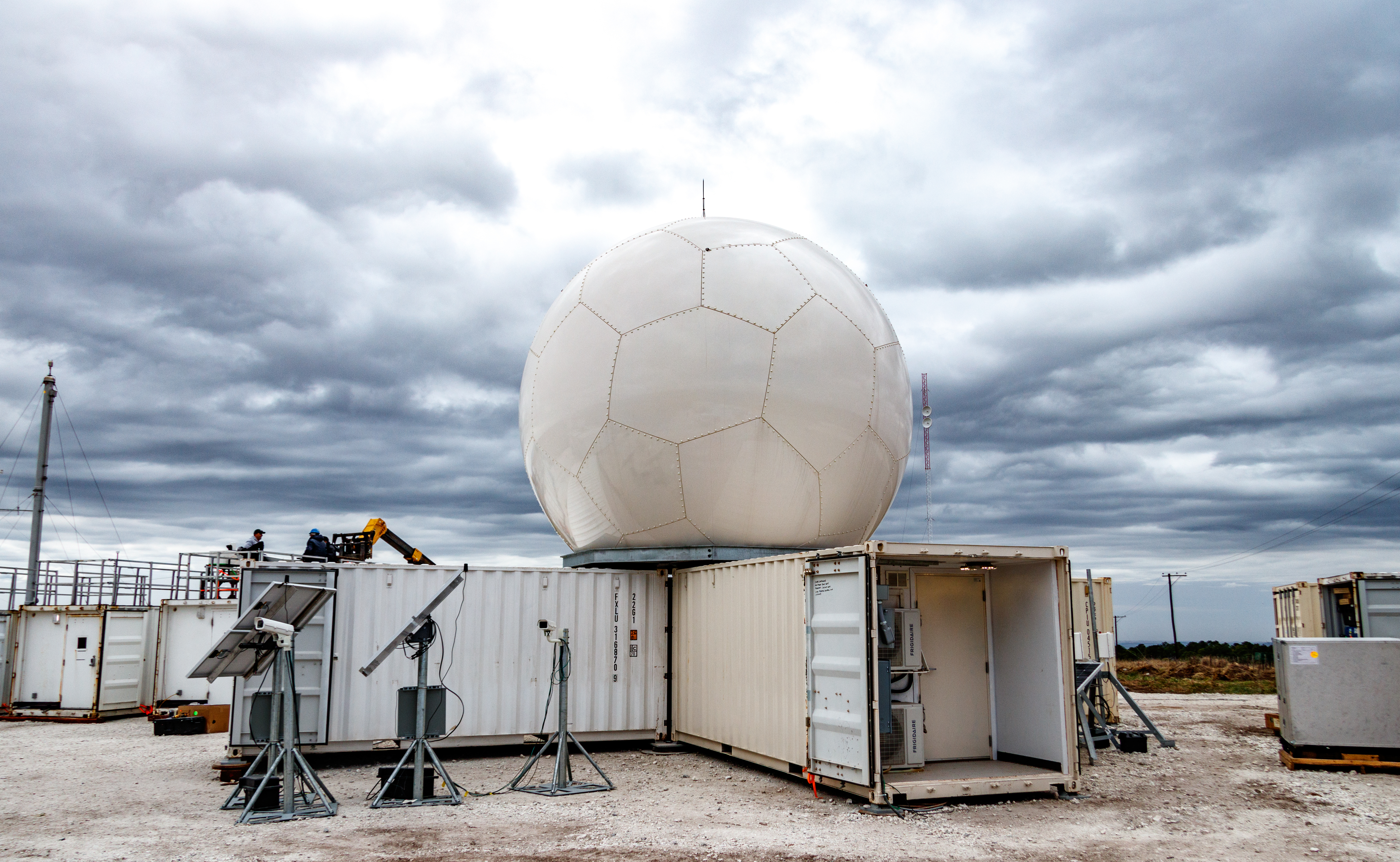AMS Scoop: LASSO Going Deep
Published: 19 January 2021
The LES ARM Symbiotic Simulation and Observation activity steps up to create data bundles for cases with deep convection

A U.S. Department of Energy (DOE) project to bundle data on rain-free shallow convective clouds is moving its focus to another meteorological regime: deep convection, such as large thunderstorms.
Within a year, organizers of a large-eddy simulation (LES) approach encapsulated in the LES ARM Symbiotic Simulation and Observation (LASSO) activity will have about 10 cases ready for modelers to use.
On the drawing board in the next few years, they added, are similar data-bundling efforts on marine precipitation and atmospheric conditions in the remote central Arctic.
“ARM” refers to DOE’s Atmospheric Radiation Measurement (ARM) user facility, which operates three fixed and three mobile atmospheric observatories in climate-critical regions of the world.
The news came during Day Five of the 101st American Meteorological Society (AMS) Annual Meeting (January 14, 2021), which like the days before it brought down a thunderstorm of new research. There were talks and town halls on lightning, tornadoes, droughts, heatwaves, monsoon forecasting, satellite fire detection, and such.
Connecting observations with modeling, such as LES, benefits all these topics. LASSO provides a unique approach, combining observations and modeling to enhance the value of the limited observations we have of the natural world and to develop predictive acuity.
Bundling ARM Data
LASSO uses LES modeling, combined with observations, to streamline access to ARM data. Since 1992, in ascending volumes, ARM has collected, checked, stored what is now petabytes of data on cloud processes, radiation, precipitation, aerosols, and other components of Earth’s climate and weather systems.
“We want to enhance the ability of researchers to take advantage of those (ARM) observations. LASSO can help connect the dots.”
William Gustafson, LASSO lead principal investigator
“We want to enhance the ability of researchers to take advantage of those observations,” said LASSO lead principal investigator and town hall co-host William Gustafson, an atmospheric scientist at Pacific Northwest National Laboratory in Washington state. “LASSO can help connect the dots.”
For the town hall, Gustafson was joined by co-hosts Andrew Vogelmann, his longtime LASSO co-principal investigator from Brookhaven National Laboratory in New York, and ARM Technical Director Jim Mather.
Gustafson called LASSO case studies―which so far focus on boundary-layer and cloud measurements―a bridge between point observations and the large-scale, parameterized models used for weather forecasts, earth system projection, and overall atmospheric process understanding.
Data for the LASSO shallow convection activity is from ARM’s Southern Great Plains (SGP) atmospheric observatory, which spans portions of Oklahoma and Kansas in the storm-wracked midcontinental United States.
Gustafson was the lead author of a recent paper on LASSO’s shallow convection efforts, which he recommended reading to get more than a brief presentation could offer. He also pointed to a September 2020 LASSO technical document.
LASSO’s library―now up to 95 shallow convection cases―consists of data bundles that contain observations and model data based on measurements taken at the SGP from April through September during the years 2015 to 2019.
To make access easy, there is a user interface via a LASSO Bundle Browser designed to help users pick bundles of interest and simplify any downloads.
Coming: Mountain, Ocean, and Arctic Cases

The second phase of LASSO, on deep convection, will derive many of its cases from a 2018–2019 ARM field campaign in Argentina: Cloud, Aerosol, and Complex Terrain Interactions (CACTI).
The seven-country effort collected terabytes of data on how terrain induces thunderstorms to initiate, grow, and organize. It took place in a mountainous region of the world where the largest such storms take place―some of them 20 kilometers (12 miles) high, said Gustafson.
He believes LASSO can shed light on factors behind deep convective cloud dynamics, including updraft strength and entrainment.
Additional data will come from an international campaign that overlapped with CACTI: Remote Sensing of Electrification, Lightning, and Mesoscale/Microscale Processes with Adaptive Ground Observations (RELAMPAGO), funded in part by the National Science Foundation.
After the deep convection project, in what is probably several more years, LASSO will look at two other meteorological regimes.
The marine-clouds phase is already under development. Gustafson and Vogelmann will choose cases from ARM’s 2017–2018 Aerosol and Cloud Experiments in the Eastern North Atlantic (ACE-ENA) field campaign on Graciosa Island in the Azores.
Scientists used the region’s thick, low clouds as a source of data on aerosols, trace gases, drizzle, and other factors in atmospheric dynamics.
For a projected LASSO scenario in a polar regime, the mother lode of ARM data is expected to come from the recently concluded 2019–2020 Multidisciplinary Drifting Observatory for the Study of Arctic Climate (MOSAiC) expedition. DOE was an early supporter of the multinational expedition. ARM supplied much of MOSAiC’s atmospheric-study gear, including aerosol collection devices and scanning radars.
LASSO is a work in progress. Its organizers welcome any feedback via lasso@arm.gov.
If you missed the LASSO town hall and were registered to attend AMS, check back on the AMS meeting website to watch a recording of the town hall.
–Contributions by ARM science writer Corydon Ireland
Keep up with the Atmospheric Observer
Updates on ARM news, events, and opportunities delivered to your inbox
ARM User Profile
ARM welcomes users from all institutions and nations. A free ARM user account is needed to access ARM data.


















